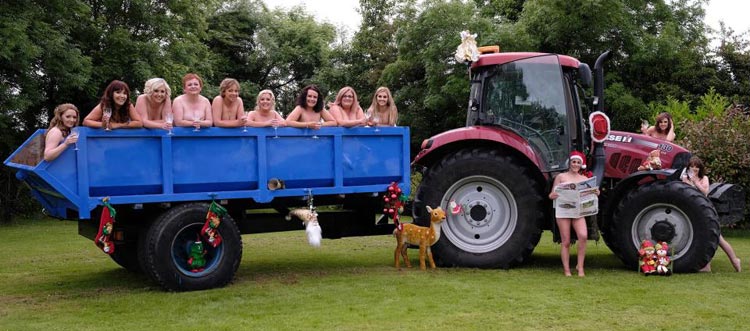|
|
 White-tailed Eagle The Department of Agriculture, Food and the Marine today confirmed that a virus identified as avian influenza (subtype H5N6) has been found in a white-tailed sea eagle, found dead in Co. Tipperary, on January 31st last.
The HSE Health Protection Surveillance Centre (HSE-HPSC) and the European Centre for Disease Control (ECDC) have both advised that the risk to public health from this avian influenza strain is very low and that the disease poses no food safety risk for consumers.
However, this finding could warrant an increased risk to poultry and therefore strict bio-security measures, irrespective of actual bird-flock size, are now necessary to further prevent the disease. Poultry owners are advised to feed and water their birds inside and under cover where wild birds are less likely to access.
This find in Co. Tipperary comes as no great surprise; since this virus has already been detected in wild birds in several locations across Great Britain from the start of 2018, and indeed in other more eastern European countries prior to the end of 2017.
Warning: In particular inform your children. If you do find dead or sickly wild birds, e.g. wild ducks, wild geese, swans, gulls or birds of prey, do not handle, but immediately report the findings.
A list of Department of Agriculture, Food and the Marine offices and their contact details are available HERE.
The results of further comparative tests on this virus are expected to become available in the coming days.
 A 15-year-old male teenager has tragically lost his life in yet another farming accident here in North Tipperary. A 15-year-old male teenager has tragically lost his life in yet another farming accident here in North Tipperary.
The tragedy occurred on a farm in the Newtown, Nenagh, Co. Tipperary area yesterday afternoon (Sunday), shortly before 6.00pm.
We understand that the boy, named locally as Master Patrick McCormack of Ryninch Ballina, a Junior Cert student in St Anne’s Community College, Killaloe, was thrown from the back of a tractor, while working on his uncle’s farm near Bulaglass, in Newtown Nenagh.
Gardaí and the Health and Safety Authority are investigating the incident.
Tributes have been paid to the popular teenager; together with condolences being offered to his family, in a post by his local GAA club in Ballina.
“Ballina GAA Club would like to offer our sincere condolences to the family of Patrick Mc Cormack who died in a tragic accident yesterday evening. Patrick played hurling and football at under age level with our club and with Ballina National School.
To John, Fiona , Emer, Mary and his grandmother Mrs Mc Cormack and family and friends, our thoughts and prayers are with you.
Taken far too soon.
May he Rest In Peace.“
Go ndéana Dia trócaire ar a anam dílis.
 Mr John O’Gorman. Clogheen, Co. Tipperary native, Mr John O’Gorman, this afternoon was elected the Chairperson of Ireland’s largest farmer-owned Co-Operative, Dairygold.
The Dairygold Co-Operative boasts 7,100 Shareholders, 2,900 milk suppliers and 1,250 staff working across its sites in Ireland, the UK, Germany, Spain and China. In 2017, Dairygold processed over 1.3 billion litres of milk from its Membership.
Holding a Bachelor degree in Accounting and Business Management and a Diploma in Corporate Direction, Food Business from UCC; Mr O’Gorman, was first elected to the Board of Dairygold in January 2013.
He is married to spouse Alison, with a family of three daughters, and previously served as Vice-Chairman of Dairygold, since just last year. He now replaces the former Chairperson Mr James Lynch, latter who served for the previous three years, thus having served out the maximum term permitted on the Board of Dairygold.
Mr O’Gorman stated that he was honoured to have been elected to serve as Chairperson of Dairygold, confirming the Co-Operative was a long-standing and ambitious organisation, holding deep commitment to both its membership and its shareholders. He also stated that he looked forward to working closely with the Board’s Chief Executive Mr Jim Woulfe, and his dedicated professional staff.
Having paid tribute to his outgoing predecessor, highlighting the latter’s great leadership and stewardship; he confirmed his enthusiasm to playing his part in Dairygold’s continued growth and future success.
 These 12 female Tipperary beauties have decided to pose nude for the ‘Tractor Girls Calendar 2018’ in support of Billy Goulding. Photo: Tom Doherty. Twelve lovely Tipperary ladies have braved the Irish weather to pose naked beside a tractor; their motivation, to raise funds for a five-year-old, latter who is presently paralysed from the neck down.
When just two and a half years old; Master Billy Goulding was playing with his sister outside in his garden when he took a fall and found himself unable to get back on to his feet.
Rushed to Limerick hospital before being transferred to Temple Street Hospital; his parents would later learn the disappointing news that their son had Transverse Myelitis, latter a neurological condition in which the spinal cord becomes inflamed. This inflammation damages nerve fibres, thus causing them to lose their myelin coating, leading to decreased electrical conductivity in the central nervous system.
Billy, who now is required to travels twice a year to the Stoke Mandeville Hospital, London for intensive physiotherapy, requires 24-hour care.
As with everything; over the years the cost of caring for Billy has greatly amplified, so the local female community have taken the similar route as that taken by the Knapely branch of the Women’s Institute (1999) in Yorkshire, England, to discreetly pose nude. (Remember the 2003 comedy film ‘Calendar Girls’, starring the gorgeous Helen Mirren).
The Tractor Girls Calendar 2018 is now available for sale and if you would like to help Billy on his road to recovery, you can also donate HERE on the Facebook page ‘Billy’s Recovery’, with calendars costing €15 each. Share and support.
Well done girls, you prove, in the equality stakes, that once again females are far superior to males.
They have five hearts, no eyes, no ears and no teeth, but one large one of the species can produce four to five kilos (9 to 11 lbs) of valuable fertiliser in just one year. They are hailed as the “intestines of the earth”, and according to my late dear grandmother, Eliza-Jane, the organic matter they produce becomes, “the mother of a healthy nosebag”.
They will wander unto Tarmacadam surfaces in search of leaves and breathing through their skin, you can find up to 1,000,000 of them living invisibly in any one-acre field. Back in 1881 Charles Darwin, the English naturalist, geologist and biologist, best known for his contributions to the science of evolution; in a statement wrote: “It may be doubted whether there are many other animals which have played so important a part in the history of the world, as have these lowly organized creatures.” They are “more powerful than the African elephant and more important to the economy than the cow.”
I speak of course of the lowly earth worm, to which the poet William Shakespeare in his play ‘Hamlet’ (Act 4, Scene 3) shows he was well aware of their capable transformative power, “A man may fish with the worm that hath eat of a king, and eat of the fish that hath fed of that worm.”
There are some twenty-seven species of earthworm to be found recorded as existing here in Irish soil. They burrow beneath the ground, consuming through their digestive system, micro-organisms, decomposing organic matter such as roots and leaves, sand grains and soil. As a result, vital minerals and nutrients are added to the soil, making it healthier and richer.
In previous generations; long before our more acquired knowledge of agricultural science, the ancients knew well when to plant crops. They understood that when the ground is cold, earth worms bury themselves deeper to avail of warmer soil, thus granting the farmer / gardener information on the temperate of the soil, prior to sowing.
Flatworms
Alas, back about 1963 we saw the first arrival of the New Zealand flatworm, (Arthurdendyus Triangulates) first recorded in Northern Ireland. It took scientists until around 1983, to discovered a possible link between low earthworm populations and the presence of flatworms. Since then, it has been established that flatworms; which inadvertently arrived here through nursery imports of potted plants from abroad, is an aggressive predator of our native earthworm. In recent years same have been widely recorded in the Republic of Ireland, especially in Co. Mayo, and now established, they are beginning to migrate slowly onto adjacent land.
Studies show that when the flatworm locates an earthworm near the earth’s surface, it secretes a digestive juice which in turn will dissolve the earthworm into a kind of gooey soup, which the former then digests. Once the flatworm becomes established, the native Irish earthworm population will be annihilated.
Earthworms are most definitely a gardeners friend and are vital to healthy rich soil, so for this reason always use a garden fork, rather than a spade, when digging to reduce cutting them up when turning over earth.
Finally, tread softly, because you may be treading on your best friend, and when next time ‘the wife’ refers to you as “a miserable little worm”, do feel complimented 😏.
|
Support Us Help keep Thurles.info online by donating below. Thank you.
Total Donated 2025: €125.00
Thank You!
Daily Thurles Mass Livestream
|

 A 15-year-old male teenager has tragically lost his life in yet another farming accident here in North Tipperary.
A 15-year-old male teenager has tragically lost his life in yet another farming accident here in North Tipperary.


Recent Comments